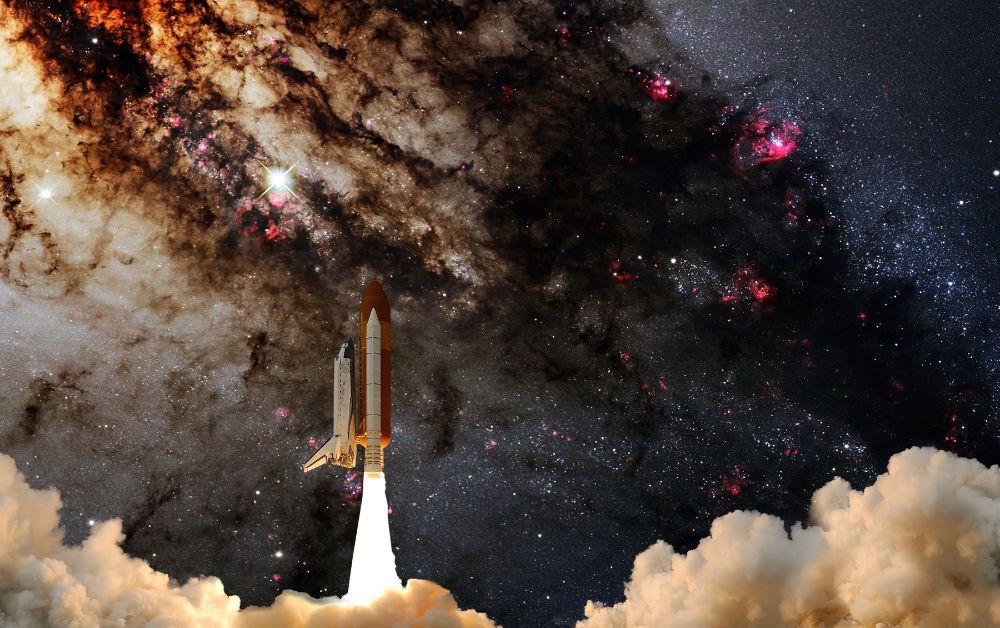In September 2022, NASA’s Double Asteroid Redirection Test (DART) spacecraft deliberately collided with a small moonlet, Dimorphos more than 7 million miles away from Earth. It successfully changed its trajectory, and proved that we can use this approach to deal with future threatening asteroids. It’s a marvel of modern science, but it’s also a fantastic analogy for what businesses need to be doing with “worst case scenario” thinking.
READ MORE:
TRANSCRIPT
They are called extinction events and as far as we can tell, there have been five of them in the history of our planet. The most recent one happened 66 million years ago, when an asteroid smashed into what is modern day Mexico and caused an extinction event that destroyed 75% of the species alive at the time, including the dinosaurs.
This is Throw Forward Thursday, my name is Graeme Codrington and yes, we’ve jumped into the past today, 66 million years, to remind us that things could go wrong on our planet.
We’re not going to jump into the future just yet, because I want to take you next to the 26th of September 2022, when NASA’s dart, which was called the Double Asteroid Redirection Test Spacecraft, smashed into Dimorphos, which is a tiny little moonlit circling an asteroid called Didymos, 7 million kilometres away from Earth.
What had Didymos done to us? Nothing, actually. This asteroid is no danger to us here, but what NASA wanted to do was to test whether it was possible to crash a spaceship into one of these asteroids and change its direction of travel. And we don’t have enough firepower yet to do it for a full-size asteroid, but we identified the small little moon circling an asteroid and, well, think of the science and engineering to get this thing right.
It was remarkable when it actually happened, 7 million miles away, many, many years to intersect the trajectories perfectly and they hit this thing just a few metres off of where they had planned to, and it worked. They shifted Dimorphos’s rotation by about 1%, which doesn’t sound like a lot, but in interstellar travel, it’s more than enough to make sure that if that was on a path to hit Earth, it would have veered off and no longer be heading in our direction.
So now come with me to the future, where some astronomer somewhere identifies an asteroid or some object that is heading towards Earth and all our calculations indicate that this is likely to hit our planet and could be one of these extinction events if it does. Well, what we’ve done is we’ve proven that we have the ability, we have the science, to be able to at least have one mechanism to deal with that existential crisis coming our way. What an exciting time to be alive.
But why do I bring this up? For me, this is a wonderful example of the type of thinking that people in multiple fields should be thinking about. Not the type of thinking that imagines the world might be over and that we’re all going to die, but the type of thinking that does ask what would happen if the worst-case scenario happened. What would happen if something incredibly bad for us did happen? How might we respond? And you don’t wait until it happens. You actually test and trial and verify that you are able to deal with a worst-case scenario in the future.
It’s scenario thinking what if imaginations and it’s precisely the work that a futurist would do. And next week, we’re going to talk about what thinking like a futurist means when it comes to looking at worst case scenarios, testing out simulations, chaos monkeys, if you know what I’m talking about., we’re going to have fun next week. If you don’t, join me next week in the Throw Forward Thursday studio when we talk about how not to have a really bad day.
I’ll see you then.
At TomorrowToday Global, we help clients around the world analyse major global trends, developing strategies and frameworks to help businesses anticipate and adapt to market disruption in an ever-changing world.
Subscribe to our team’s weekly newsletter filled with insights and practical resources to help you succeed in the future of work.
For all enquiries, please use this email: [email protected]
Graeme Codrington, is an internationally recognized futurist, specializing in the future of work. He helps organizations understand the forces that will shape our lives in the next ten years, and how we can respond in order to confidently stay ahead of change. Chat to us about booking Graeme to help you Re-Imagine and upgrade your thinking to identify the emerging opportunities in your industry.
For the past two decades, Graeme has worked with some of the world’s most recognized brands, travelling to over 80 countries in total, and speaking to around 100,000 people every year. He is the author of 5 best-selling books, and on faculty at 5 top global business schools.


